Abstract
The effects of acute cardiac failure induced by pentobarbital or pronethalol on the basic mechanical properties of the intact left ventricle were examined in the dog, and the influence on auxotonic and isovolumic contractions of the increase in end-diastolic volume that usually accompanies cardiac failure was assessed. The right heart bypass preparation was employed, and isovolumic beats were induced by sudden balloon occlusion of the aortic root. The ventricular pressure-volume curve was determined directly, and the mechanical responses of the myocardial fibers and contractile elements were calculated.
When end-diastolic pressure was held constant, failure reduced the extent of circumferential fiber shortening, and the tension-velocity relation calculated during isovolumic beats was always shifted, with reductions in both maximal velocity (average decrease 30%) and maximal developed tension (average 23%); in addition, during failure achievement of maximal contractile element velocity and maximal tension was delayed, whereas the total duration of contraction was always prolonged. Acetylstrophanthidin tended to reverse all of these changes. When end-diastolic volume was augmented during failure at a constant stroke volume, the extent of circumferential fiber shortening was reduced (3.82 cm to 2.02 cm), and during ejection the fiber and contractile element velocities were diminished at wall tensions comparable to control; maximal velocity and velocity at peak tension were also decreased. The tension-velocity relation during isovolumic beats was shifted by failure with consistent reductions in maximal shortening velocity, but changes in maximal tension were small. Maximal instantaneous power was always reduced by failure, and a striking alteration occurred in the relation between work expended in stretching the series elastic component and the external work; the former, “internal work,” increased by an average of 90%, the latter diminished by 11%, and the total contractile element work remained essentially unchanged.
These findings are discussed within the framework of a three dimensional model that included fiber length, wall tension, and contractile element velocity. The experimental techniques employed appear to permit a more complete definition of the abnormalities of the ventricular myocardium in experimental failure. They are potentially applicable in the closed-chest animal and allow quantitative determinations of the contractile properties of the left ventricle.
Full text
PDF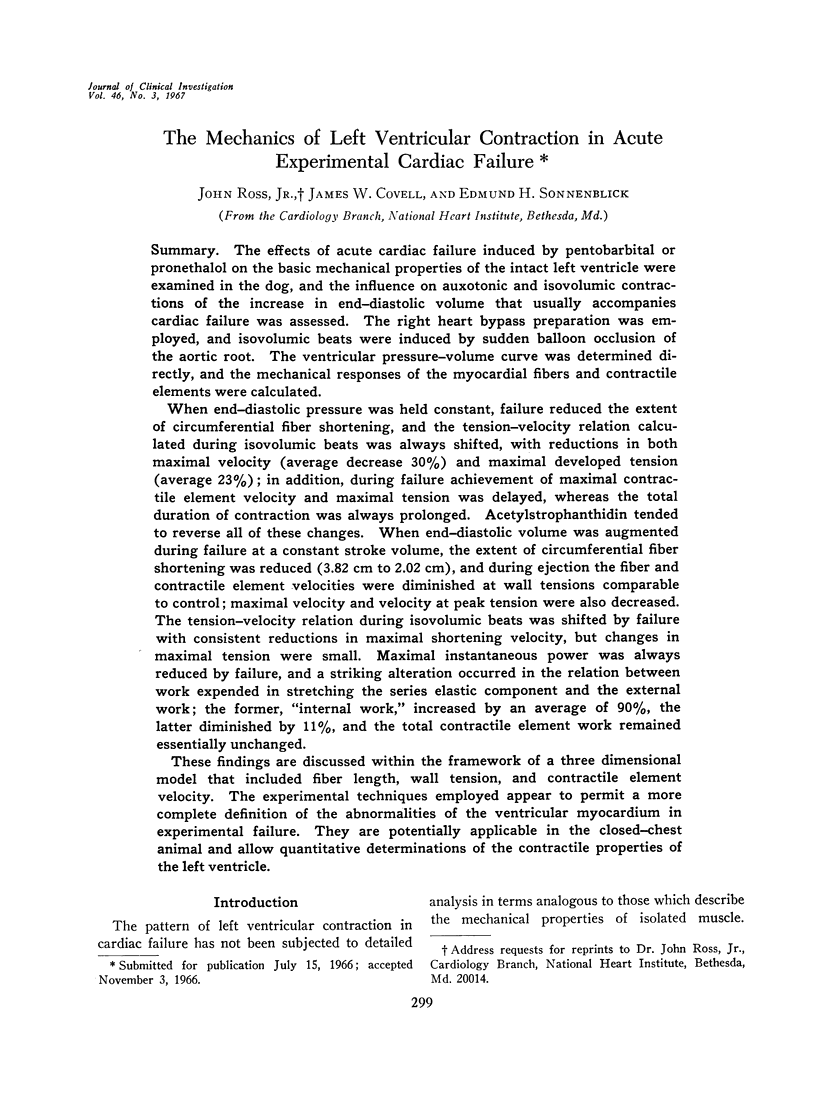


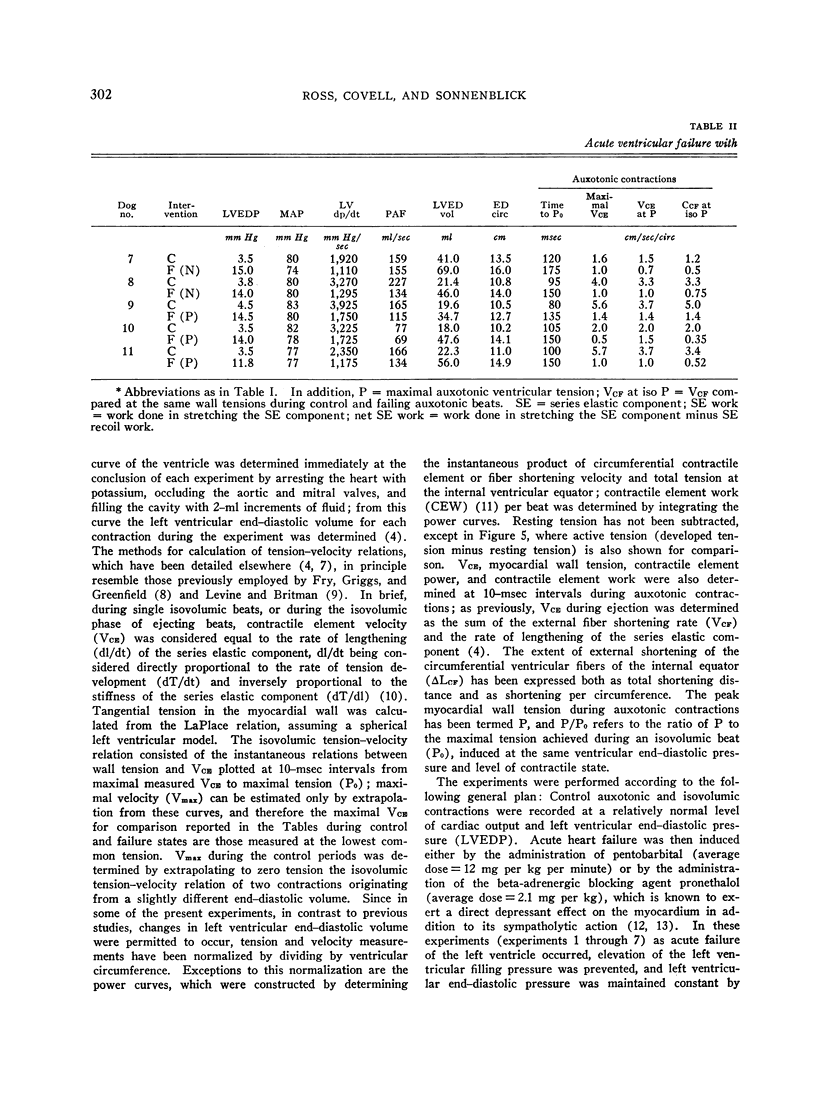
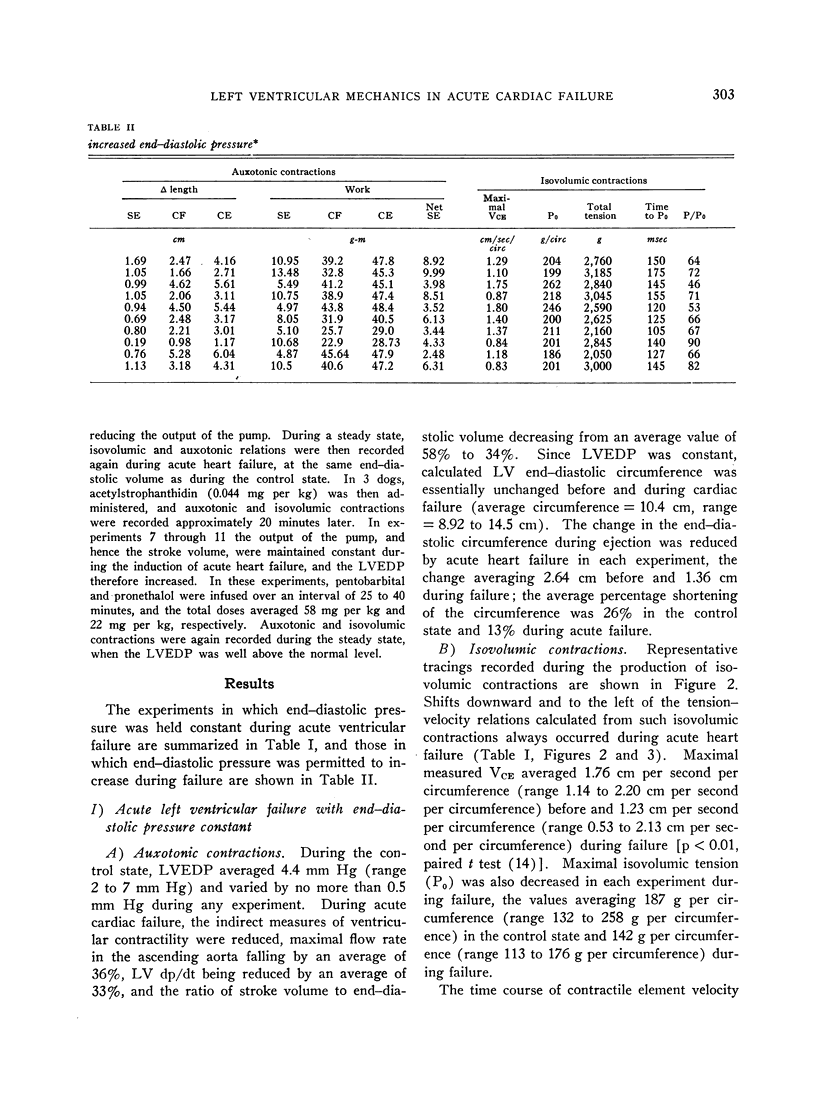
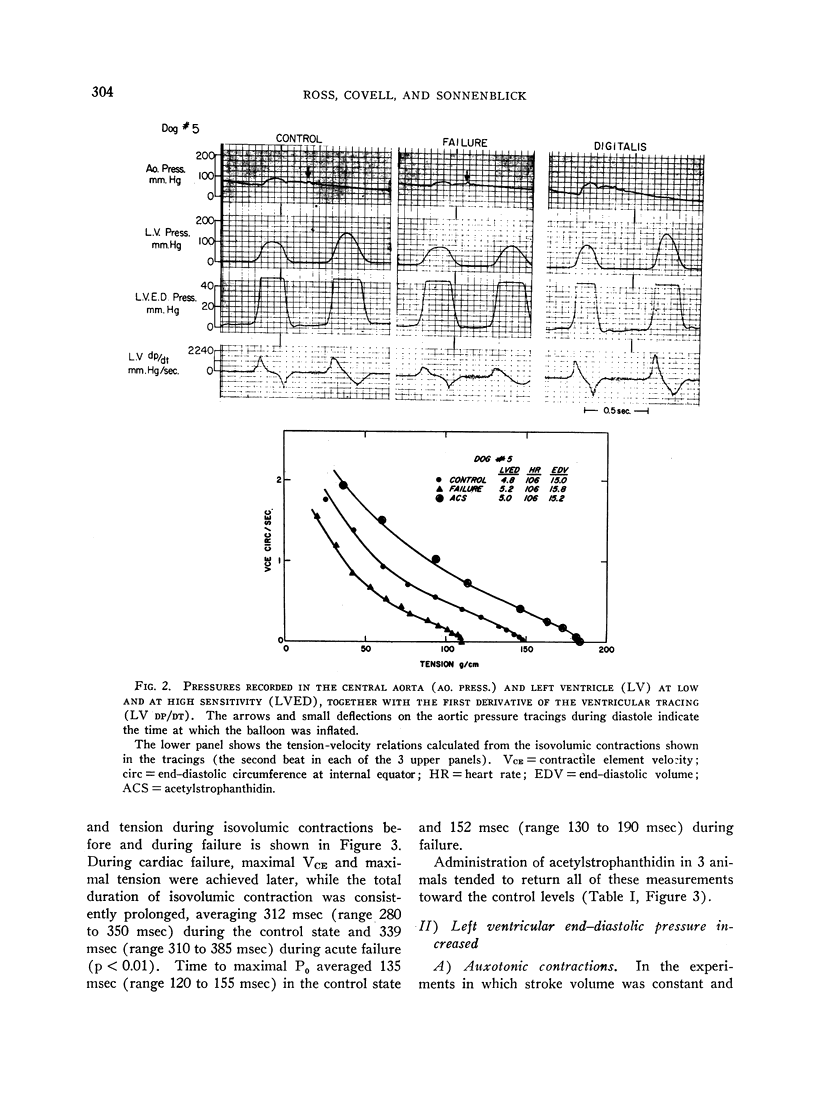


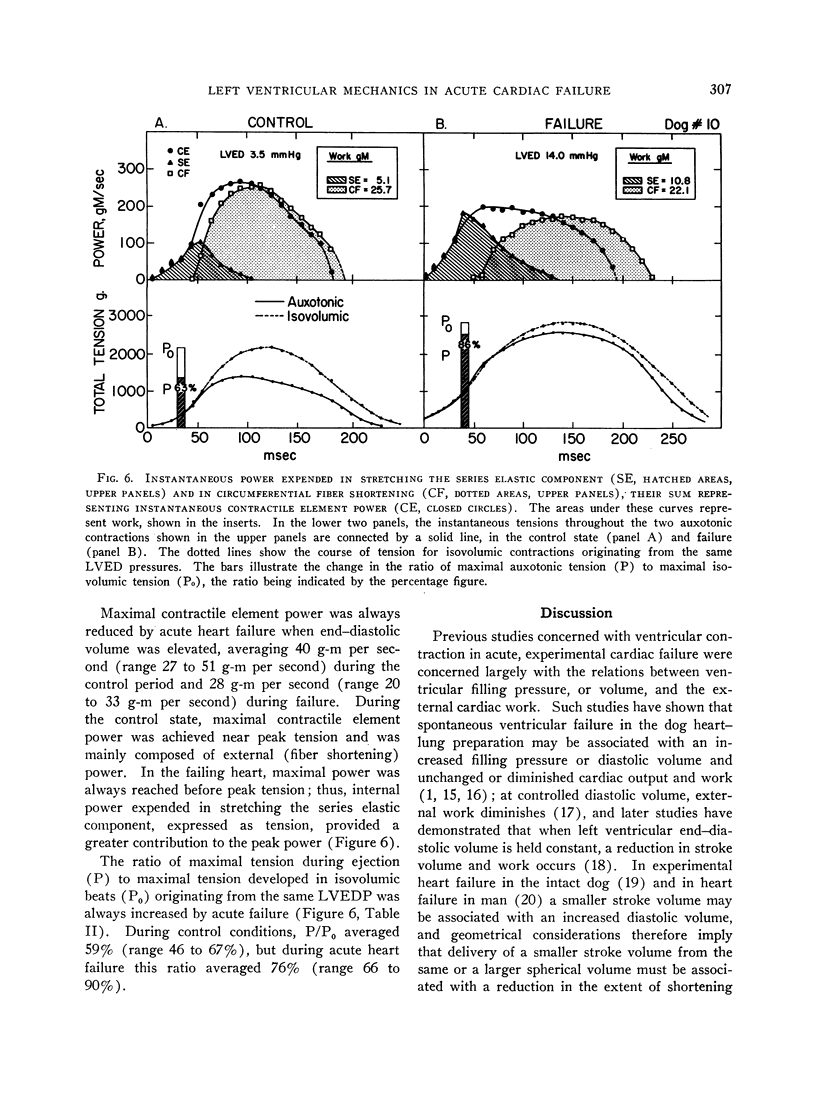


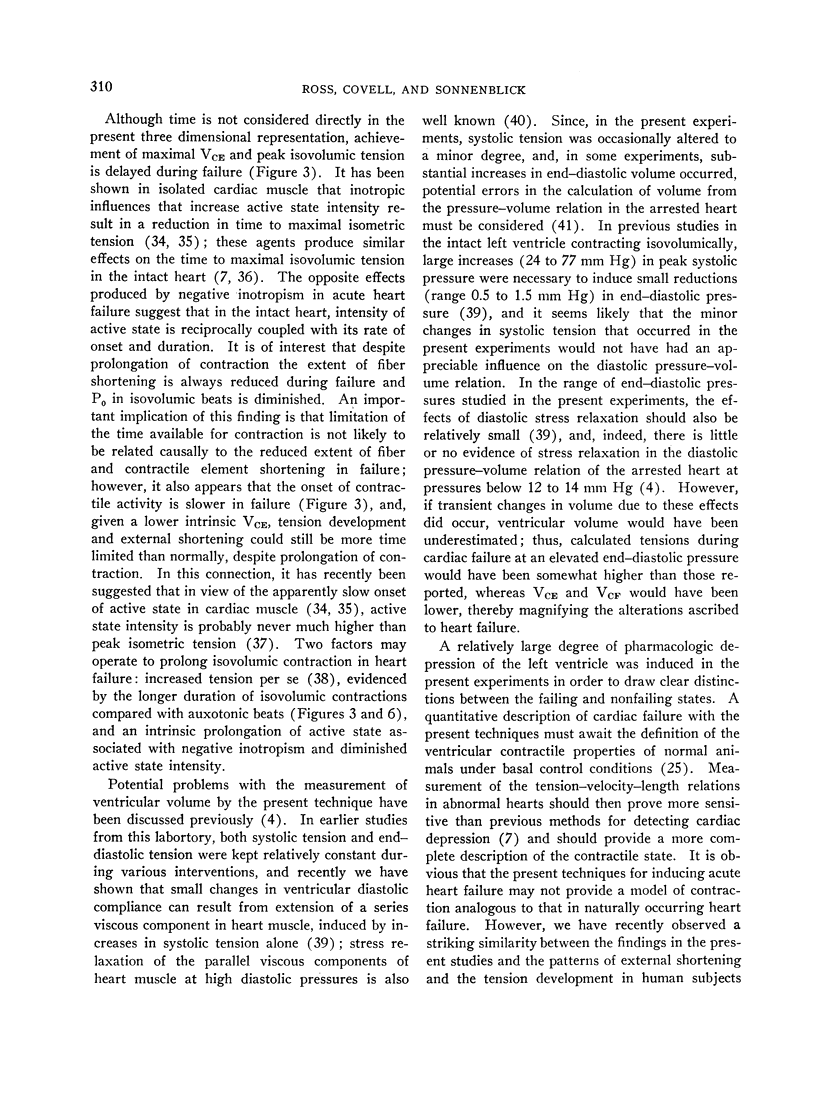
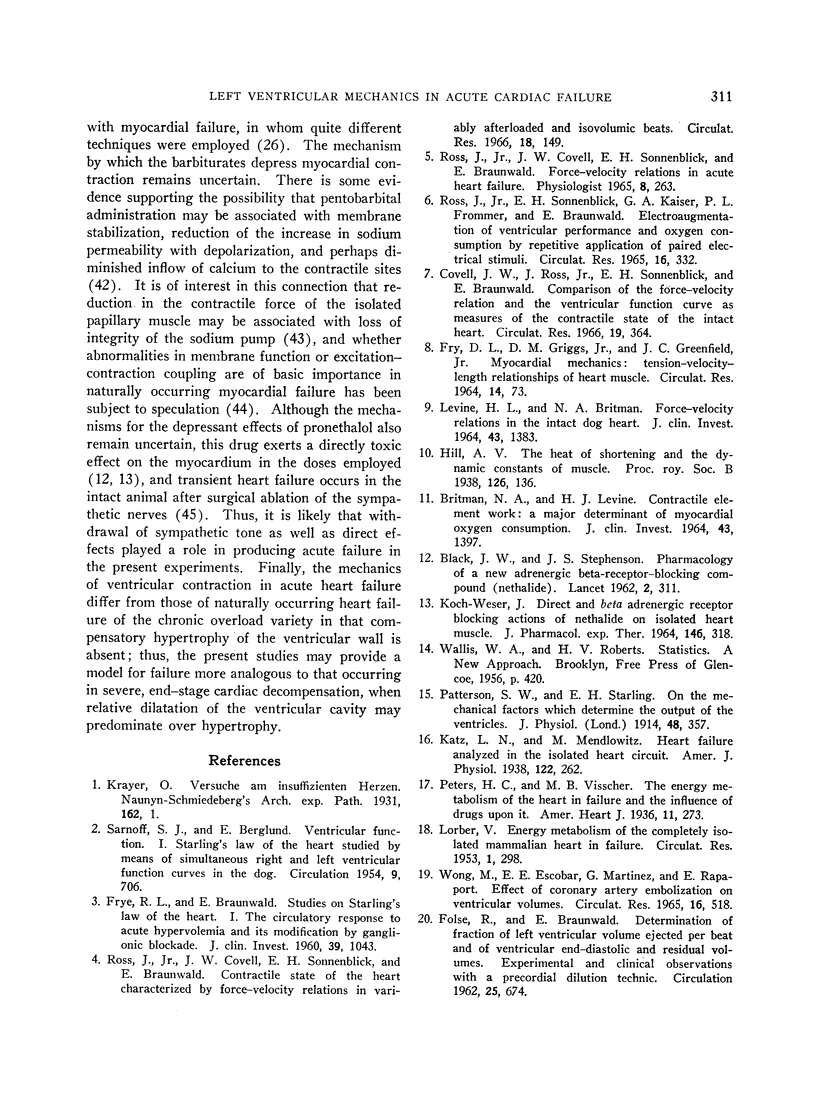
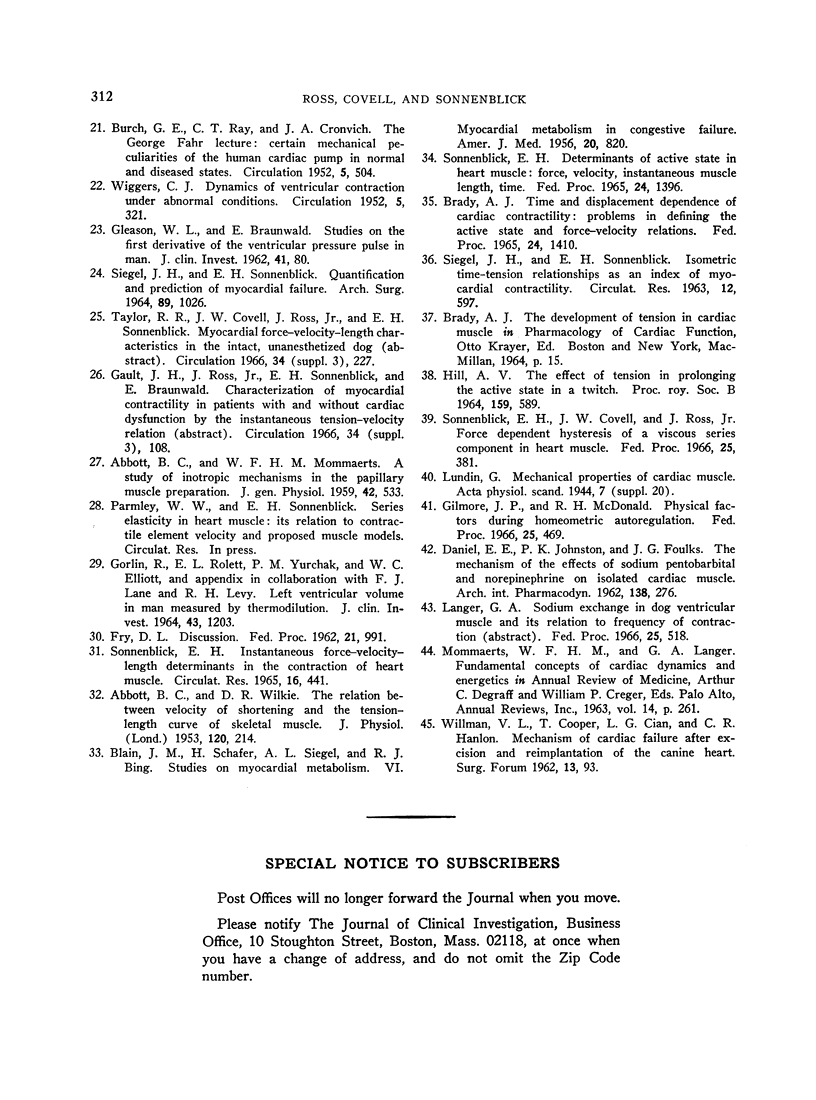
Images in this article
Selected References
These references are in PubMed. This may not be the complete list of references from this article.
- ABBOTT B. C., MOMMAERTS W. F. A study of inotropic mechanisms in the papillary muscle preparation. J Gen Physiol. 1959 Jan 20;42(3):533–551. doi: 10.1085/jgp.42.3.533. [DOI] [PMC free article] [PubMed] [Google Scholar]
- ABBOTT B. C., WILKIE D. R. The relation between velocity of shortening and the tension-length curve of skeletal muscle. J Physiol. 1953 Apr 28;120(1-2):214–223. doi: 10.1113/jphysiol.1953.sp004886. [DOI] [PMC free article] [PubMed] [Google Scholar]
- BLACK J. W., STEPHENSON J. S. Pharmacology of a new adrenergic beta-receptor-blocking compound (Nethalide). Lancet. 1962 Aug 18;2(7251):311–314. doi: 10.1016/s0140-6736(62)90103-4. [DOI] [PubMed] [Google Scholar]
- BLAIN J. M., SCHAFER H., SIEGEL A. L., BING R. J. Studies on myocardial metabolism. VI. Myocardial metabolism in congestive failure. Am J Med. 1956 Jun;20(6):820–833. doi: 10.1016/0002-9343(56)90203-0. [DOI] [PubMed] [Google Scholar]
- BRITMAN N. A., LEVINE H. J. CONTRACTILE ELEMENT WORK: A MAJOR DETERMINANT OF MYOCARDIAL OXYGEN CONSUMPTION. J Clin Invest. 1964 Jul;43:1397–1408. doi: 10.1172/JCI105015. [DOI] [PMC free article] [PubMed] [Google Scholar]
- BURCH G. E., RAY C. T., CRONVICH J. A. Certain mechanical peculiarities of the human cardiac pump in normal and diseased states. Circulation. 1952 Apr;5(4):504–513. doi: 10.1161/01.cir.5.4.504. [DOI] [PubMed] [Google Scholar]
- Brady A. J. Time and displacement dependence of cardiac contractility: problems in defining the active state and force-velocity relations. Fed Proc. 1965 Nov-Dec;24(6):1410–1420. [PubMed] [Google Scholar]
- Covell J. W., Ross J., Jr, Sonnenblick E. H., Braunwald E. Comparison of the force-velocity relation and the ventricular function curve as measures of the contractile state of the intact heart. Circ Res. 1966 Aug;19(2):364–372. doi: 10.1161/01.res.19.2.364. [DOI] [PubMed] [Google Scholar]
- DANIEL E. E., JOHNSTON P. K., FOULKS J. G. The mechanism of the effects of sodium pentobarbital and norepinephrine on isolated cardiac muscle. Arch Int Pharmacodyn Ther. 1962 Jul 1;138:276–301. [PubMed] [Google Scholar]
- FOLSE R., BRAUNWALD E. Determination of fraction of left ventricular volume ejected per beat and of ventricular end-diastolic and residual volumes. Experimental and clinical observations with a precordial dilution technic. Circulation. 1962 Apr;25:674–685. doi: 10.1161/01.cir.25.4.674. [DOI] [PubMed] [Google Scholar]
- FRY D. L., GRIGGS D. M., Jr, GREENFIELD J. C., Jr MYOCARDIAL MECHANICS: TENSION-VELOCITY-LENGTH RELATIONSHIPS OF HEART MUSCLE. Circ Res. 1964 Jan;14:73–85. doi: 10.1161/01.res.14.1.73. [DOI] [PubMed] [Google Scholar]
- FRY D. L. Implications of muscle mechanics in the heart. Discussion. Fed Proc. 1962 Nov-Dec;21:991–993. [PubMed] [Google Scholar]
- FRYE R. L., BRAUNWALD E. Studies on Starling's law of the heart. I. The circulatory response to acute hypervolemia and its modification by ganglionic blockade. J Clin Invest. 1960 Jul;39:1043–1050. doi: 10.1172/JCI104119. [DOI] [PMC free article] [PubMed] [Google Scholar]
- GLEASON W. L., BRAUNWALD E. Studies on the first derivative of the ventricular pressure pulse in man. J Clin Invest. 1962 Jan;41:80–91. doi: 10.1172/JCI104469. [DOI] [PMC free article] [PubMed] [Google Scholar]
- HILL A. V. THE EFFECT OF TENSION IN PROLONGING THE ACTIVE STATE IN A TWITCH. Proc R Soc Lond B Biol Sci. 1964 Mar 17;159:589–595. doi: 10.1098/rspb.1964.0021. [DOI] [PubMed] [Google Scholar]
- KOCH-WESER J. DIRECT AND BETA ADRENERGIC RECEPTOR BLOCKING ACTIONS OF NETHALIDE ON ISOLATED HEART MUSCLE. J Pharmacol Exp Ther. 1964 Dec;146:318–326. [PubMed] [Google Scholar]
- LEVINE H. J., BRITMAN N. A. FORCE-VELOCITY RELATIONS IN THE INTACT DOG HEART. J Clin Invest. 1964 Jul;43:1383–1396. doi: 10.1172/JCI105014. [DOI] [PMC free article] [PubMed] [Google Scholar]
- LORBER V. Energy metabolism of the completely isolated mammalian heart in failure. Circ Res. 1953 Jul;1(4):298–311. doi: 10.1161/01.res.1.4.298. [DOI] [PubMed] [Google Scholar]
- Patterson S. W., Starling E. H. On the mechanical factors which determine the output of the ventricles. J Physiol. 1914 Sep 8;48(5):357–379. doi: 10.1113/jphysiol.1914.sp001669. [DOI] [PMC free article] [PubMed] [Google Scholar]
- ROSS J., Jr, SONNENBLICK E. H., KAISER G. A., FROMMER P. L., BRAUNWALD E. ELECTROAUGMENTATION OF VENTRICULAR PERFORMANCE AND OXYGEN CONSUMPTION BY REPETITIVE APPLICATION OF PAIRED ELECTRICAL STIMULI. Circ Res. 1965 Apr;16:332–342. doi: 10.1161/01.res.16.4.332. [DOI] [PubMed] [Google Scholar]
- SARNOFF S. J., BERGLUND E. Ventricular function. I. Starling's law of the heart studied by means of simultaneous right and left ventricular function curves in the dog. Circulation. 1954 May;9(5):706–718. doi: 10.1161/01.cir.9.5.706. [DOI] [PubMed] [Google Scholar]
- SIEGEL J. H., SONNENBLICK E. H. Isometric time-tension relationships as an index of myocardial contractility. Circ Res. 1963 Jun;12:597–610. doi: 10.1161/01.res.12.6.597. [DOI] [PubMed] [Google Scholar]
- SIEGEL J. H., SONNENBLICK E. H. QUANTIFICATION AND PREDICTION OF MYOCARDIAL FAILURE. Arch Surg. 1964 Dec;89:1026–1036. doi: 10.1001/archsurg.1964.01320060094019. [DOI] [PubMed] [Google Scholar]
- SONNENBLICK E. H. INSTANTANEOUS FORCE-VELOCITY-LENGTH DETERMINANTS IN THE CONTRACTION OF HEART MUSCLE. Circ Res. 1965 May;16:441–451. doi: 10.1161/01.res.16.5.441. [DOI] [PubMed] [Google Scholar]
- Sonnenblick E. H. Determinants of active state in heart muscle: force, velocity, instantaneous muscle length, time. Fed Proc. 1965 Nov-Dec;24(6):1396–1409. [PubMed] [Google Scholar]
- WIGGERS C. J. Dynamics of ventricular contraction under abnormal conditions. Circulation. 1952 Mar;5(3):321–348. doi: 10.1161/01.cir.5.3.321. [DOI] [PubMed] [Google Scholar]
- WILLMAN V. L., COOPER T., CIAN L. G., HANLON C. R. Mechanism of cardiac failure after excision and reimplantation of the canine heart. Surg Forum. 1962;13:93–95. [PubMed] [Google Scholar]
- WONG M., ESCOBAR E. E., MARTINEZ G., RAPAPORT E. EFFECT OF CORONARY ARTERY EMBOLIZATION ON VENTRICULAR VOLUMES. Circ Res. 1965 Jun;16:518–526. doi: 10.1161/01.res.16.6.518. [DOI] [PubMed] [Google Scholar]



